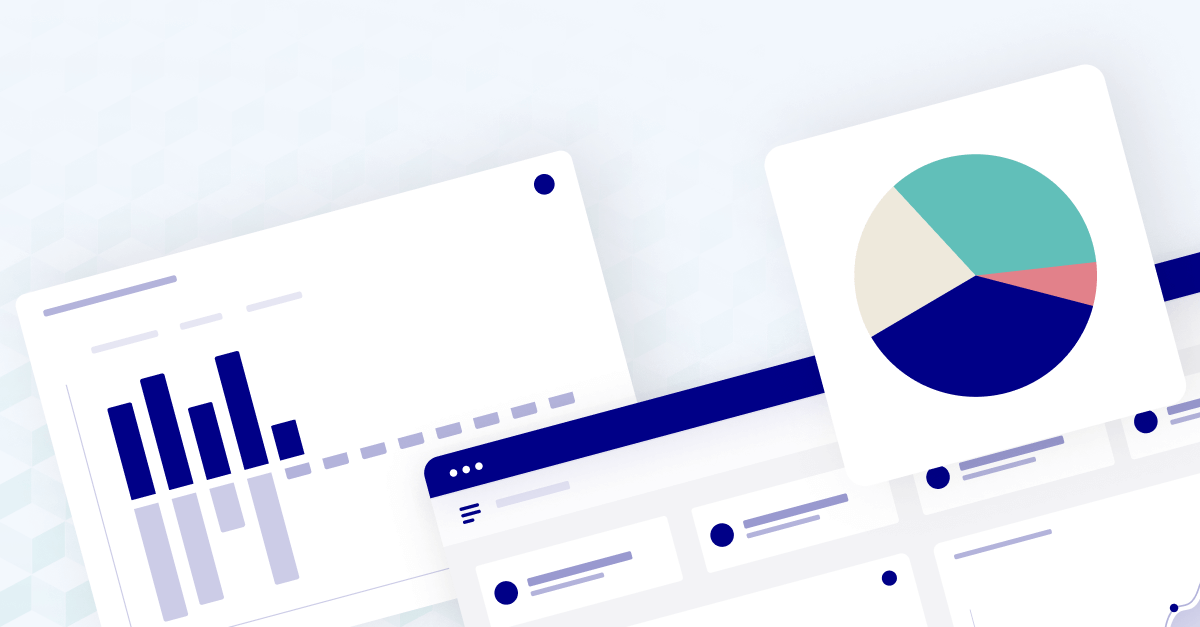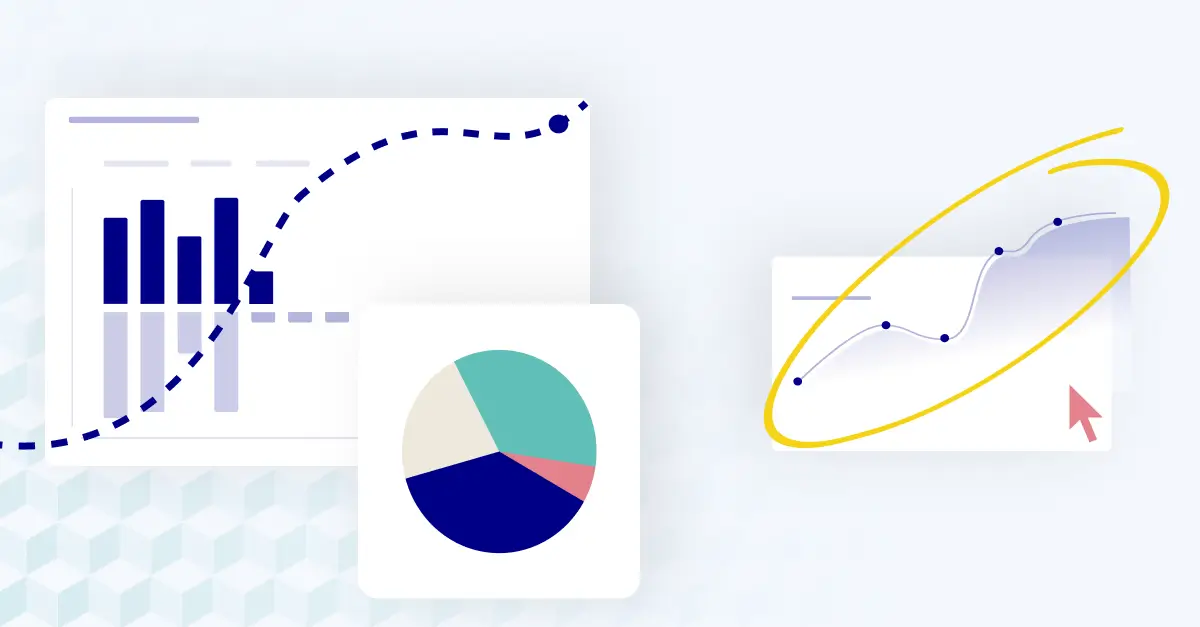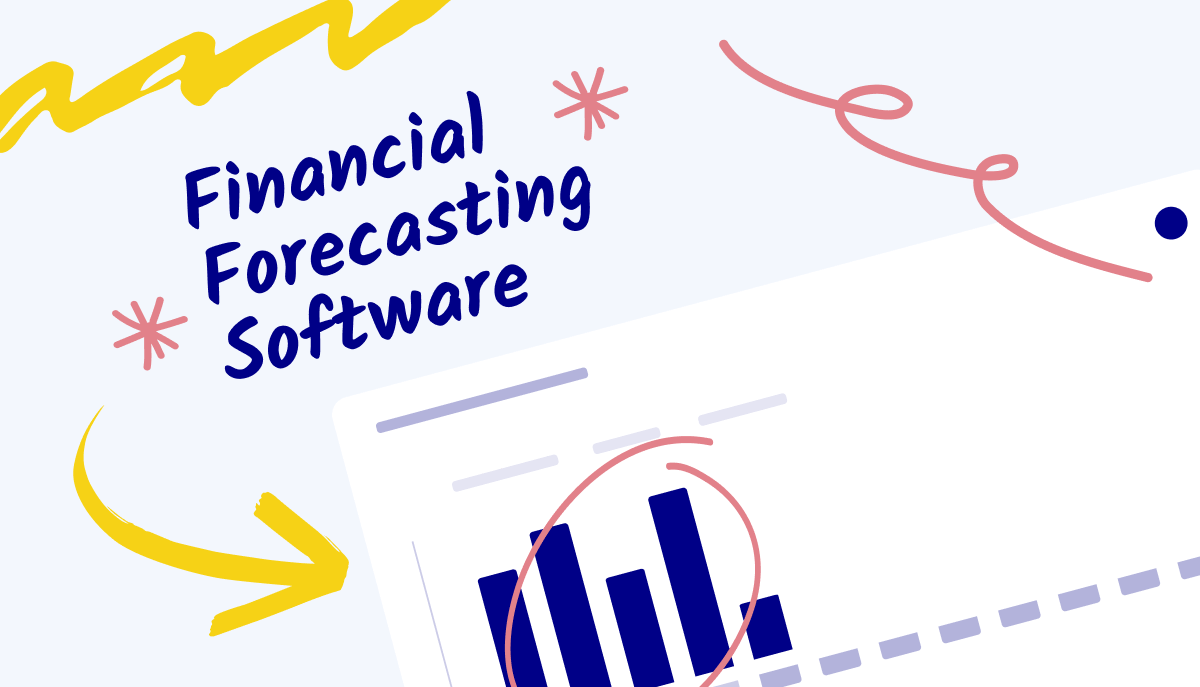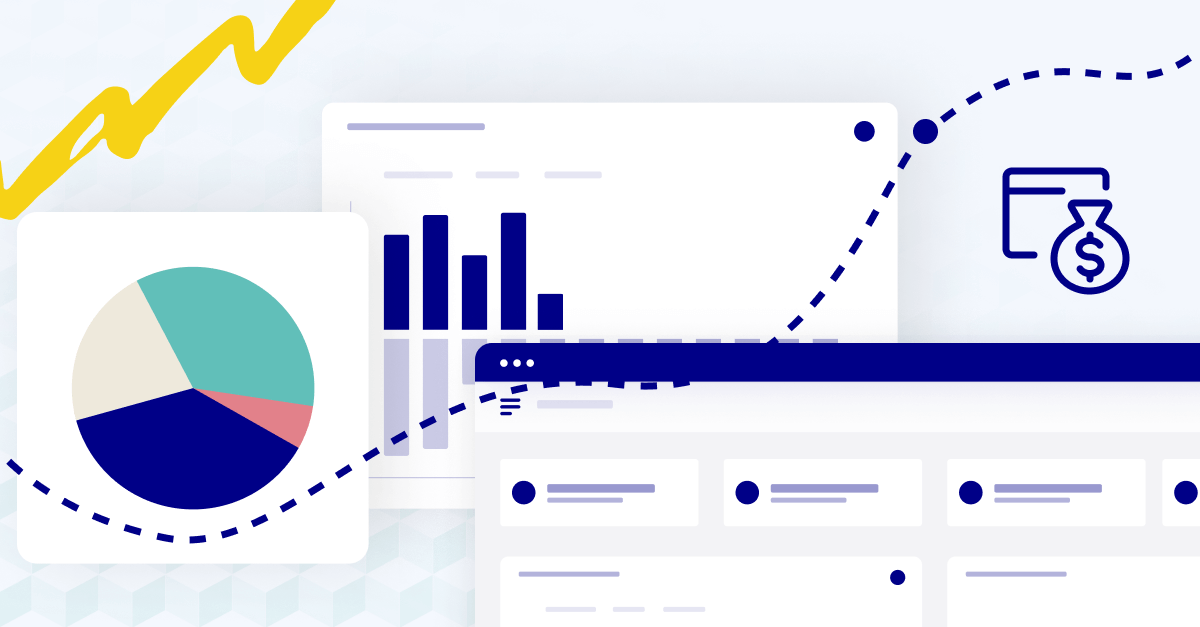What is financial forecasting?
Financial forecasting is a specific process where businesses take financial data from the past, apply it to the current business environment, and aim to make predictions about a company’s future financial outcomes.
It’s like a company’s version of a weather report: they look ahead to the future based on what information they’ve got and what’s happened in the past. The aim is to predict whether a big storm is on the way or if it will be sunny and 75 ahead.
The financial forecasting process is similar. Businesses use historical and current financial information to determine the company’s future financial position.
Financial forecasting can look at short- and long-term predictions; the more data involved, the better.
Importance of financial forecasting
Financial forecasts are a big deal for business leaders. They help to guide strategic business decisions, give a snapshot into the company’s financial health and feed into effective business planning.
For the annual budget process, financial forecasts can help to shape where the budget should go for each department. Analyzing such crucial financial data can help inform the company's goals and how they will achieve them.
Accurate financial forecasts are also useful for key stakeholder relations and potential investors. A healthy set of financial forecasts gives these groups a good sense of the business' performance.
Financial forecasting benefits
There’s a practical reason why financial forecasting is needed by every business, but there are some other positives to the process that can help companies to thrive financially. Let’s get into them.
Performance evaluation
Measuring actual performance against financial forecasts can let business leaders know whether a company’s goals are on track and if they need to change course accordingly.
If done often enough, such as monthly or quarterly, the financial forecasts can help determine whether strategies that positively or negatively impact performance have changed.
Identify trends and patterns
Financial data's dependent and independent variables are useful across the wider business.
Assessing how dependent variables (like revenue) interact with independent variables (like marketing spend, economic growth, or competitors) leads to a more informed decision-making process.
Knowledge is power
Any business worth its salt should be doing critical analysis like financial forecasting.
Why?
Because knowing what’s happened with the finances in the past can help to plan ahead with buying inventory, prepare for seasonal fluctuations and ensure there’s enough cash flow to weather any storms, for a few reasons.
Securing financing
Lenders like to know they will get their money back.
So financial forecasts can go a long way in reassuring them about a business’s short and long-term financial performance.
Risk management
In the same way that financial forecasting can help with goals and objectives, it can inform whether there is any financial risk on the horizon that needs handling or corrective action to avoid.
This makes it a useful tool for business leaders to ward off any financial woes.

What are the financial forecasting methods?
Financial forecasting can be sliced and diced differently to fit different scenarios, so there are a few ways.
For instance, a historical financial forecast takes past data from key financial documents like the company’s income statement, cash flow statement, and balance sheet to predict future revenues.
Other businesses might prefer to have sales forecasts as standard. There are two sales forecasting methodologies: bottom-up and top-down.
Bottom-up forecasting involves starting with the sales predictions and multiplying the costs, whereas top-down forecasting starts with the total addressable market and forecasts a percentage of what the company can expect to capture.
Cash flow financial forecasting is another popular option for organizations looking for a short-term idea of the financials' health.
It looks at past and current expenses and income to forecast future cash flow in a set period.
You get the picture. But with financial forecasting, it’s data that makes the world go round. Let’s get into the details of financial forecasting methods.
Qualitative forecasting
You can use the straight-line method, moving averages, a simple linear regression, or a multiple linear regression to conduct financial forecasting. These all work on inputted historical financial data to show a picture of financial patterns on which the business can base future predictions.
Let’s run through a couple of typical qualitative methods. Pro forma financial statements, such as a pro forma balance sheet, use historical data to make forecasts. Time series analysis involves looking at data from a specific period to determine things like seasonality or cyclical fluctuations.
Quantitative forecasting
These methods don’t run on much data but provide valuable insight into how trends might impact future financials.
Market research is a typical quantitative forecasting option, as the data gleaned from customers and competitors can impact future revenues or sales.
Expert opinions are another example, a key method being the Delphi technique. It’s a fancy term for when specialist opinions are collected and analyzed for forecasting purposes.
Finally, scenario-based forecasting does what it says: different scenarios and future outcomes are assessed based on the available data.
Core elements of financial forecasts
No matter which method you’re using or what kind of data, there are some core metrics a financial forecast should include to get the most from it. You're doing great if you’ve got these three things in your financial forecast.
Forecasting range
A financial forecast works in hypotheticals, even if the data gives a good idea of what’s to come.
So an upper and lower range in the numbers to account for the best and worst-case scenario gives some much-needed flexibility for those unexpected expenses or sales boosts.
Macroeconomics
But the figures can’t operate in a silo, so business leaders should also look to complete a full assessment of the macroeconomic trends that could impact the financials.
Are there any geopolitical tensions, or is a recession happening?
The financial forecast should include a full analysis of these factors and the weighting of their impact.
Why it matters
A CFO needs to get into the ‘why’ behind the data.
Otherwise, the decision-makers are presented with a sea of numbers without context.
Picking out some critical reasons why the forecast matters for the wider business will help to shape the major financial decisions business leaders need to make.
Financial forecasting vs. financial modeling
Financial forecasts are often mistaken for financial modeling, but the two serve different (though related) purposes.
Financial forecasts involve predictions, whereas financial models are the tools for interpreting and presenting that data to the broader business.
The financial forecast presents the predictions based on available data.
In contrast, financial modeling involves interpreting those forecasts and other financial reports to build a predictive financial model.
Financial models are typically used for a company’s budgeting process, for creating pro forma statements and financial reporting.
Financial forecasts help to shape financial modeling, but they serve two distinct purposes.
So they’re closely related but not exactly the same.

What is the financial forecasting process?
With all the different ways of conducting financial forecasting, you might wonder what the system should look like.
While every business and industry is different in what they need from financial forecasting, here are the must-have steps for any financial forecasting and budgeting process.
Define the objectives
Because there are so many different ways to do financial forecasting and key metrics to consider, it can quickly become overwhelming. Starting with the ‘why’ will keep the financial forecasting process on track.
Why is the report being made, and for what purpose? Answering this will dictate the projected fiscal period needed - usually a monthly, quarterly, or yearly time frame - and inform what business leaders will get from the report.
Gather the data
It’s time to gather past financial statements. Usually, finance teams like to have the cash flow statements, the income statement, and the balance sheet as the trifecta for quantitative data. Anything else relevant here, like equity, past expenses, and investments, should be added to accurately reflect the company’s performance.
Be sure to look for qualitative data sources, like expert feedback, insights from key stakeholders, and market research. Not only does it help with the forecast’s accuracy, but it might glean new insights that hadn’t been considered before.
Collecting this data throughout the year makes it a lot easier to aggregate when it’s financial forecasting time. Financial forecasting software is a good way to keep track of everything and run forecasts quickly.
Choose your forecasting method
Pick your poison. Revisiting the ‘why’ at the beginning of the process can help you decide which of the many financial forecasting methods is best for your needs.
For instance, short-term forecasts could use extrapolating methods from historical revenue data, while regression analysis is good for showing how dependent and independent variables interact.
A mix of qualitative and quantitative forecasting works well if the hard data isn’t up to scratch and needs supplementing with market research or competitor trends.
Even if the hard data is somewhat lacking, there are ways to make it work. And countless other ways to drill down into the specifics, like cash flow forecasting and sales forecasting.
Develop the assumptions
You can now conclude what might happen from your chosen data and forecasting method.
Any claims need to be realistic and well-supported with evidence to be credible, as financial forecasting informs major financial decisions in the business.
Make it effective
Once all of the efforts have gone into creating the forecasts, the last thing any finance leader wants to happen is to see a mistake in the report or misinterpreted data leading to different conclusions. So it’s essential to check every figure with a fine-tooth comb and ensure nothing is amiss.
We get it: data is a beautiful thing. But not everyone understands what the figures mean; some parts of the forecast might need more explanation.
Relating the forecasts back to other key business documents, like the organizational goals or financial planning policy, will help give the board that all-important context to understand the data and make decisions.
And it’s always vital to be honest about why certain assumptions have been made or if the forecasts aren’t as great as what the rest of the business wants to hear. Going into detail on solutions rather than focusing on problems is always an effective tactic in managing expectations.
How software can help with financial forecasting
There's plenty of software out there to help you with financial planning and financial forecasting.
And make no mistake: we love Excel too.
Since you're comfortable with Excel, you want to stay there.
So when evaluating financial forecasting software, you should pay special attention to the platforms that natively integrate with Excel.
Keeps the whole onboarding and learning process simple and streamlined.
Efficiency and automation
We all want an easier life, and financial forecasting can leave finance teams with a lot of data to handle. Specialist forecasting software can help with that.
Software saves time and reduces human error by automatically performing complex calculations to create financial forecasts.
Not to mention the different templates and pre-built models which can streamline set-up and make the financial forecasting process a cinch each time.
Accurate forecasting
One of the key issues finance leaders struggle with is financial forecasting accuracy.
It can be way too easy to draw the wrong conclusion or to accidentally present misleading figures. Using software ensures the data is handled in the same way each time for maximum accuracy.
Forecasting software also comes with built-in risk checks and audit trails to keep everything above board and transparent.
They also come with data validation tools and processes to help minimize errors and make updates quickly and easily without breaking the entire model. (It happens to the best of us.)
Multiple scenarios analysis
With software having all the data ready to go at any point, it makes scenario testing and changing the assumptions super simple.
Business leaders can therefore see the impact of a particular initiative before it is implemented or check up on its progress to see if it’s making a difference.
This helps to make better decisions for the business, its employees, and its financial health. Sounds like a win-win to us.
Conclusion: create a financial forecast with Cube
Now you know all about financial forecasting.
And if you're ready to invest in software to make financial forecasting easier, you should look at Cube.
Cube integrates natively with Excel and Google Sheets so it's easy to collaborate across the team and departments.
And Cube also connects to your ERP and HRIS (among other things), so you can get all your data in a single click.
(No, really. One click.)
Sound intriguing?
Click the image below to request a free demo and see how Cube can simplify and streamline your financial forecasting.



.png)









